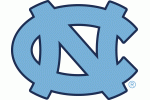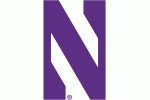@cafawip138
Whats the differences in Haskins and Fields?
And how did you know Haskins would struggle? Was it the work ethic?
I didn’t *know* that Haskins would bust in the NFL, but there were enough question marks for me that I was relieved at the time that the Bengals didn’t take him. As a redshirt freshman backup, Haskins showed some of the best pure arm talent I’ve ever seen in a college QB, albeit in a limited sample size, and good mobility as well. He looked like a potential future top 3 pick based on his raw talent. But in his redshirt sophomore season, his physical traits regressed. Arm talent was still near-elite, but not off the charts like in 2017, and he went from a mobile QB who could get yards on the ground and extend plays to a guy who ran like C-3PO. And while there weren’t any glaring red flags with his intangibles at the time, without going into too much detail, there were some reasons for concern about his leadership, competitiveness, and work ethic.
Given that 2018 was a weak QB class, I still thought Haskins had enough potential to justify a first round pick, but I wasn’t confident that he would become the kind of pro player most Ohio State fans thought he would be. Of course, nobody could’ve predicted that he would crash and burn so quickly and spectacularly. And I have to think that his failures played a part in Justin Fields’ draft stock tumbling. But even without the benefit of hindsight, Fields is a MUCH better prospect.
Haskins and Fields are only comparable prospects in terms of their arm talent coming out of college — Fields has a slightly stronger and more accurate arm, but Haskins had a quicker release, better throwing mechanics, and better pocket presence. So in terms of passing ability, they’re comparable as draft prospects, with maybe a slight edge to Haskins if you include his tape from 2017 (though Fields still has slightly more upside as a passer). But Haskins graded out as an “F” in terms of athleticism and a “C-“ for intangibles (“F” in hindsight), while Fields grades out as an “A+” in both respects.
In other words, Haskins’ only real selling point was his excellent arm talent; Fields has roughly the same level of arm talent coming out of college, and it’s arguably his
weakest trait as a player. (And unlike Haskins, he actually improved his mechanics during his time at OSU, and should continue to improve as a pro). They may have been picked at similar draft slots, but Fields is on a completely different level, even without the benefit of hindsight.











